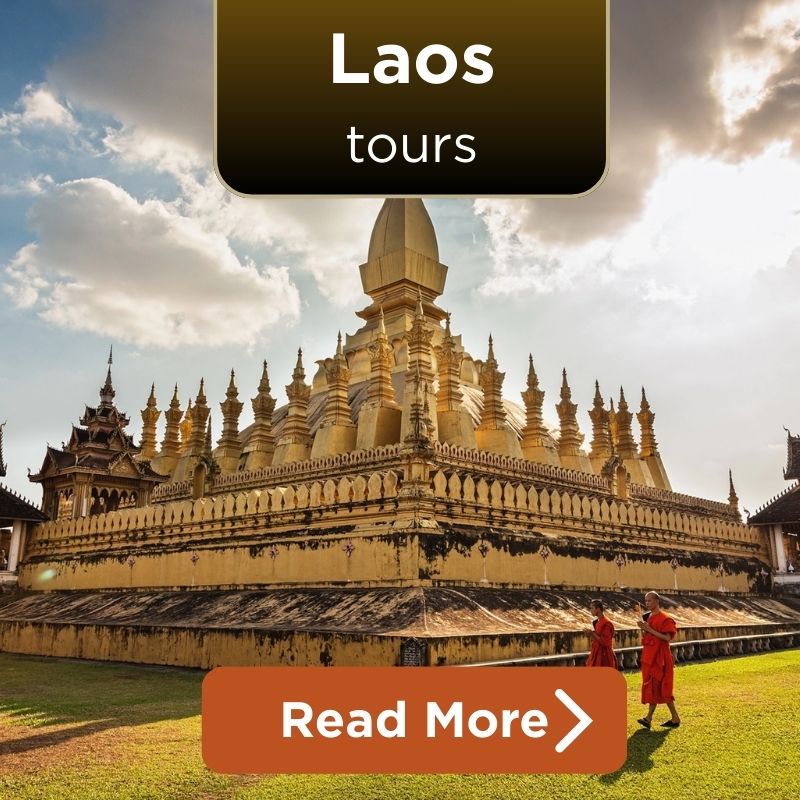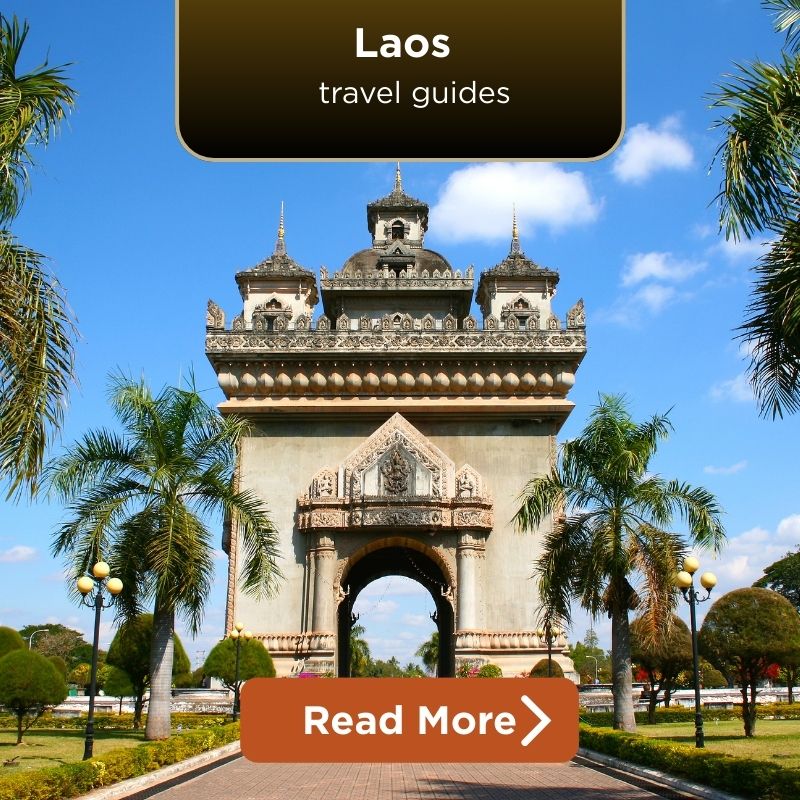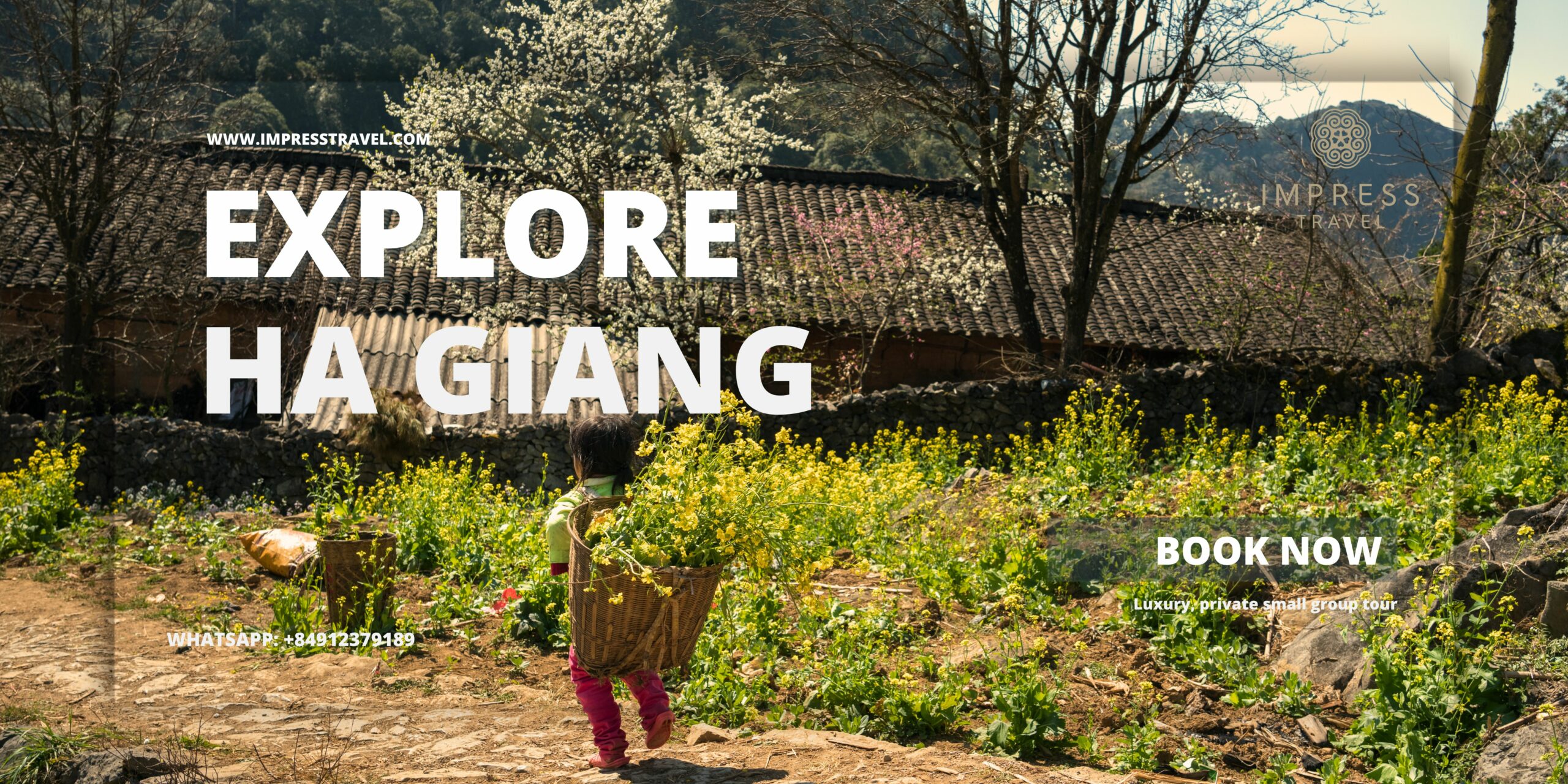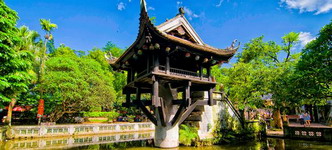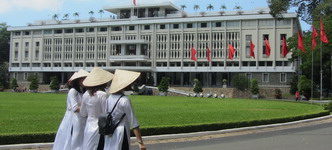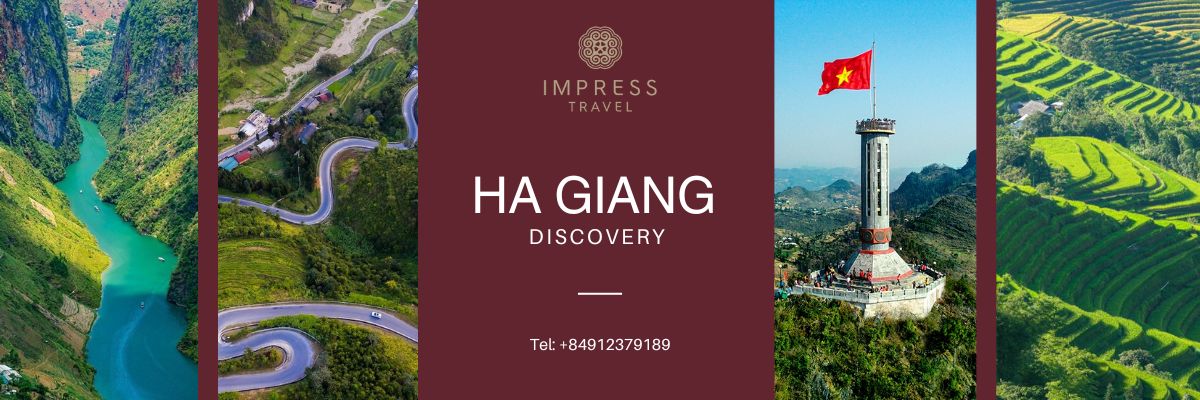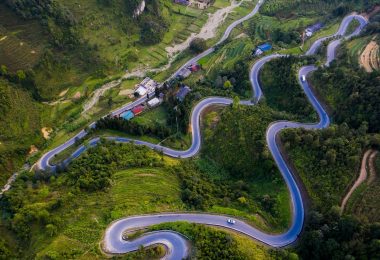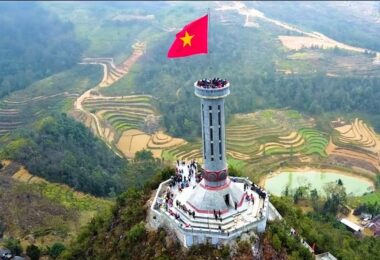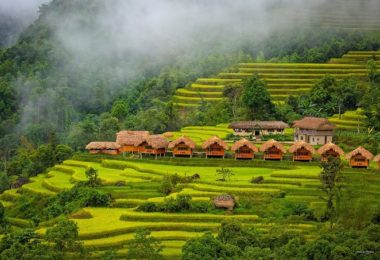Xa Phin is set high on the misty flanks of Tay Con Linh, the second-highest mountain in Vietnam. The Dao village is known for its long-life Shan Tuyet tea trees, cool highland climate, and fairytale moss-clad rooftops. Trails continue beyond Thac Huou (Deer Waterfall) and deep into the Shan tea forest, which is a complete treasure among the Independent Trekking Ha Giang routes.
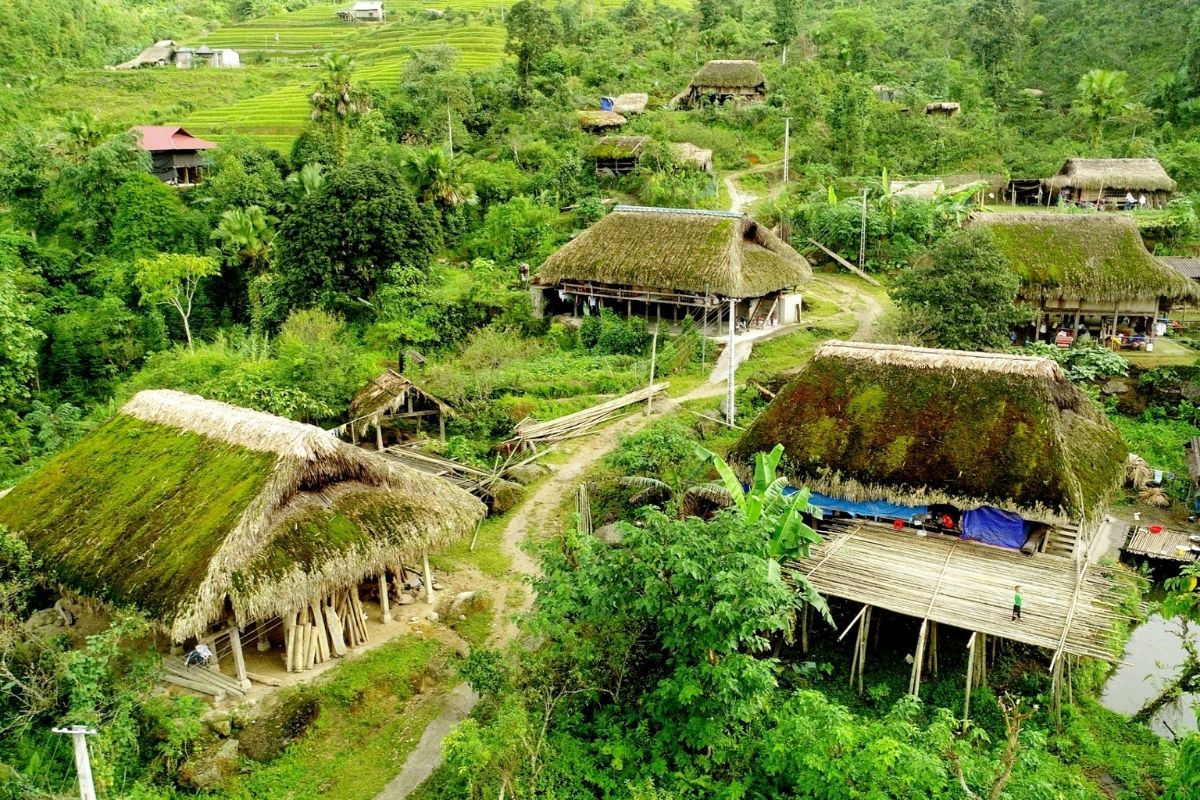
Xa Phin Village (Source: bvhttdl)
2. Na Mau Village – Terraced Heaven
- Location: Thong Nguyen Commune, Hoang Su Phi District, Ha Giang Province
- GPS Approx.: 22.6368°N, 104.8753°E
Trekable from Xa Phin or Mao Phin, Na Mau reveals a breathtaking valley blanketed in multi-layered rice terraces. The village offers serene homestays and continues the trek along the renowned tea forest trail, an ideal spot for trekkers seeking solitude and majestic scenery.
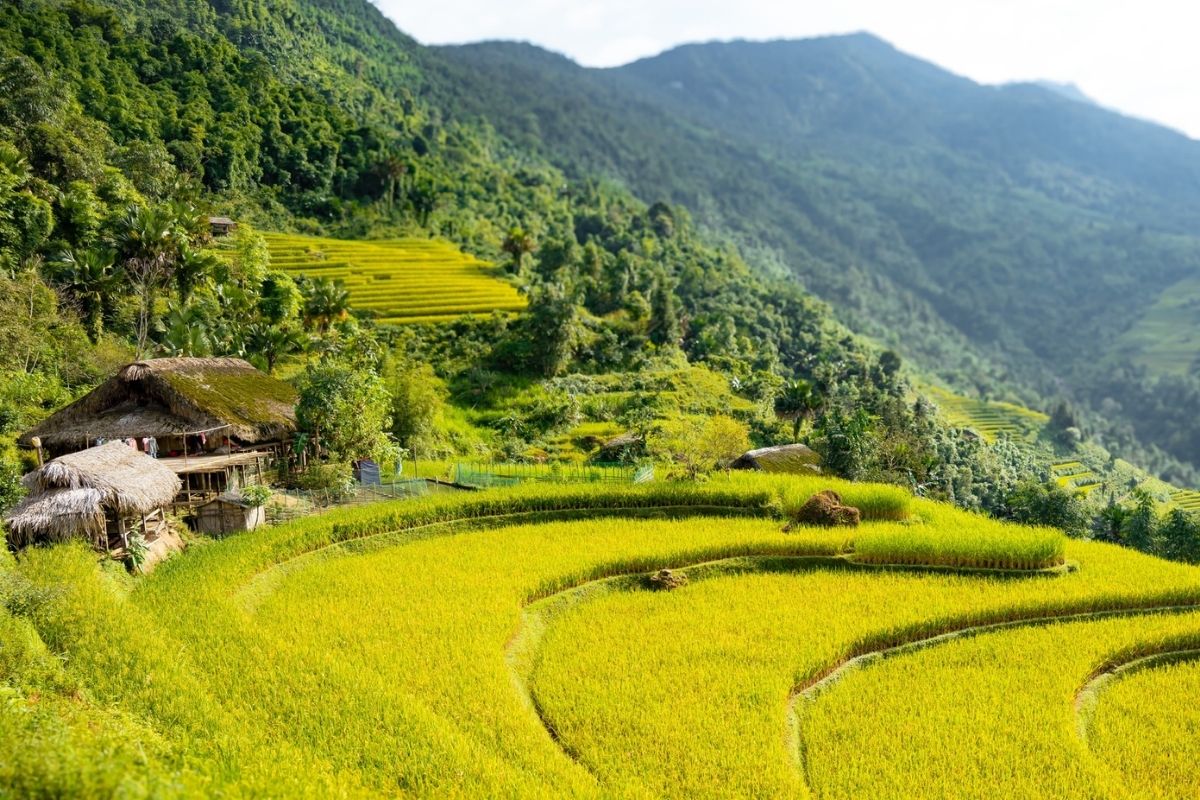
Na Mau Village (Source: hagiangtretravel)
3. Lao Xa Village – A Silver Artisan’s Sanctuary
- Location: Sung La Commune, Dong Van District, Ha Giang Province
- GPS Approx.: 23.2513°N, 105.3722°E
Just 2km from Sung La valley (Pao’s hometown), Lao Xa is a small H’mong village renowned for silvercraft culture, where individuals continue to make jewelry and ornaments by fire and hammer. Its stone-walled houses, peaceful landscape, and deep-rooted culture will certainly make an enriching stopover for Independent Trekking Ha Giang visitors.
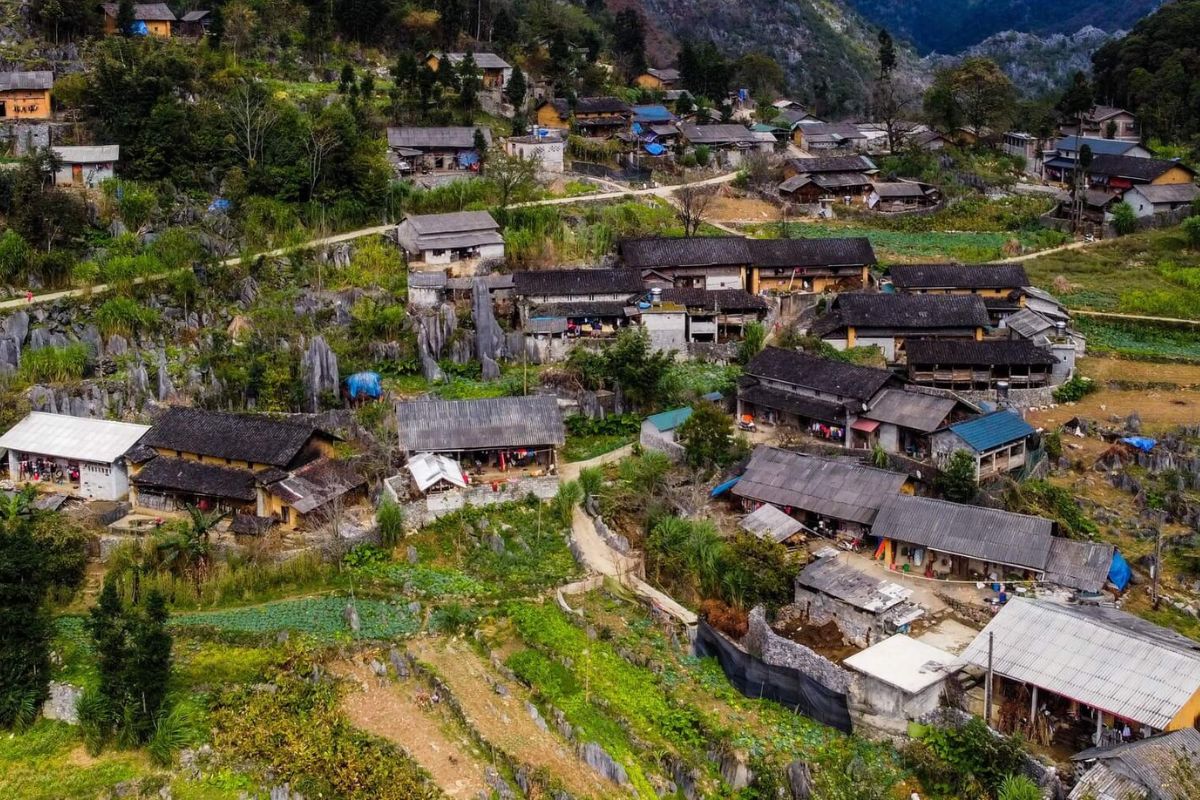
Lao Xa Village (Source: paiadventure)
4. Sao Ha (Ghost Village) – Mystery in the Mist
- Location: Van Chai Commune, Dong Van District, Ha Giang Province
- GPS Approx.: 23.3110°N, 105.3615°E
Also called “Lang dia nguc" to residents, Sao Ha is nestled deep in the forest, hidden behind ancient growth trees and surrounded by cinematic legend. Famous as a filming location for “Tet o Lang dia nguc" and “Ke an hon," this abandoned but hauntingly beautiful village offers a surreal atmosphere. H’mong families still occupy stone homes here, though thinly. Ideal for more experienced or adventurous trekkers.
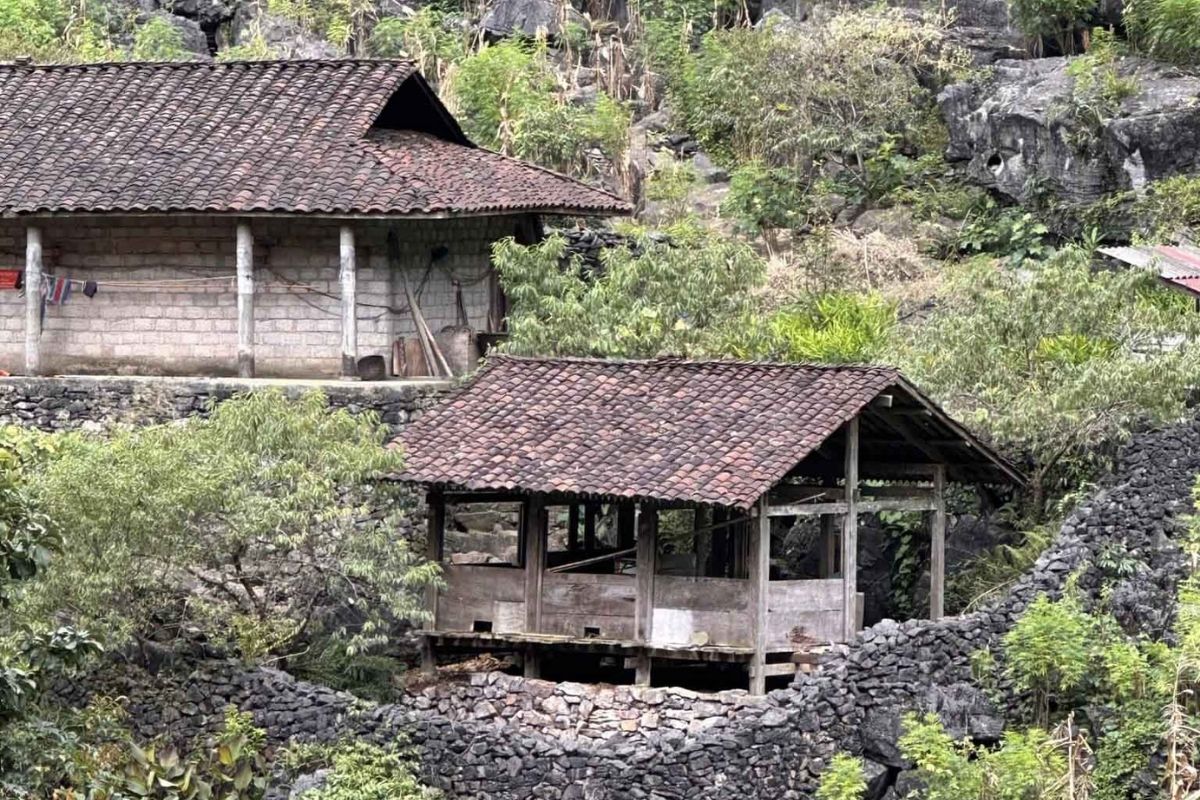
Sao Ha (Ghost Village) (Source: thesaigontimes)
5. Thien Huong Village – Borderline Harmony
- Location: Dong Van Town, Dong Van District, Ha Giang Province
- Distance from Dong Van Town: ~5km north
- GPS Approx.: 23.2519°N, 105.4183°E
Thien Huong is a peaceful Tay village on the Vietnam–China border, renowned for its yin-yang tiled roofs, massive banyan trees, and scents of home-brewed corn wine. It’s accessed by a breathtaking 1-hour hike from Dong Van and is a great spot for a day trek or overnighting if you’d like to mix your Independent Trekking Ha Giang adventure with a warm cultural welcome.
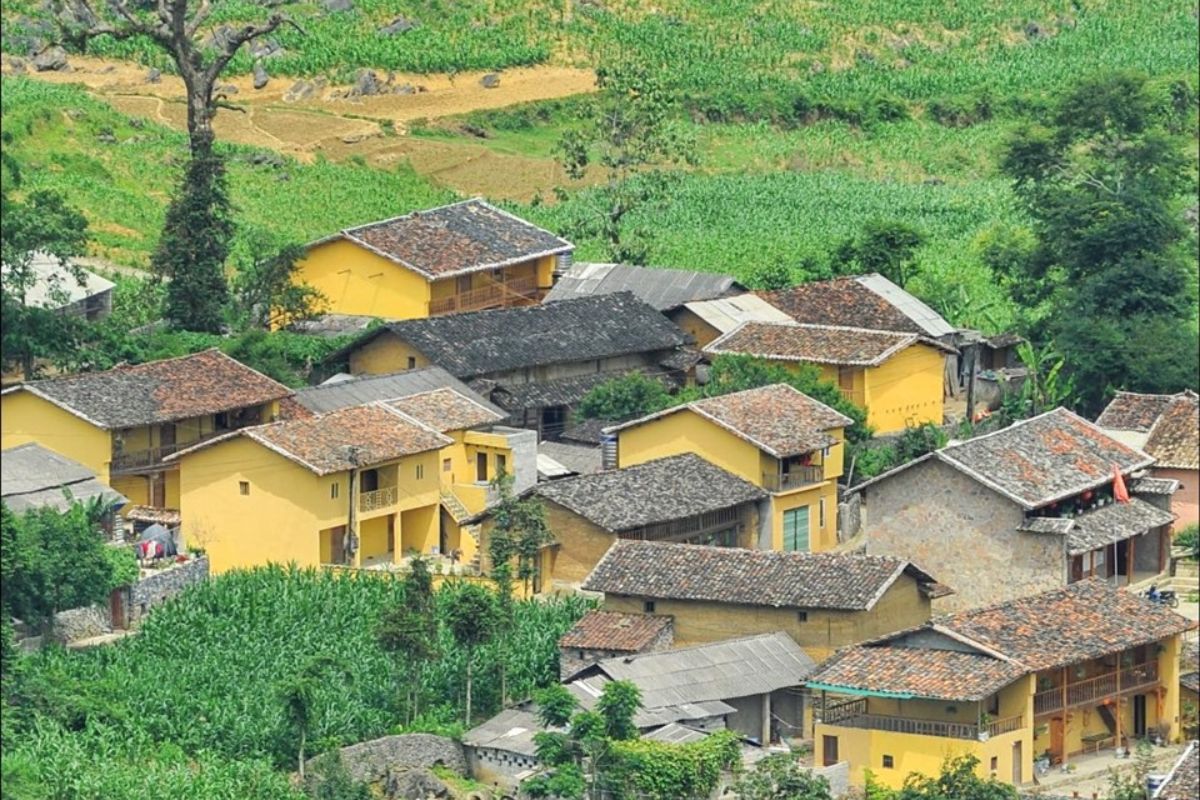
Thien Huong Village (Source: baolaodong)
Sample Itinerary: 2-Day Independent Trekking from Ha Giang City
DAY 1: Ha Giang City → Mao Phin → Thac Huou → Xa Phin
- Trekking Distance: ~18km
- Estimated Difficulty: Moderate
- Trail Type: Forest trail, terraced rice fields, light mountain pass
- Overnight: Homestay in Xa Phin (Dao ethnic village)
Morning
07:00 – Depart Ha Giang City (transfer to trailhead by car or motorbike – approx. 45 min)
08:00 – Begin trek in Mao Phin village (Hoang Su Phi District). Start your trek along stone trails through bamboo forests, winding through terraced fields in the morning light. Children wave from a distance as you trek by water buffalo in the fields.
10:30 – Arrive at Thac Huou – a stunning natural waterfall within the forest. Take a short break here to enjoy the refreshing mist, perfect for photos and a trail snack.
Afternoon
12:30 – Trail lunch en route (packed local banh chung, boiled egg, herbal tea)
13:30 – Hiking up to Xa Phin Village. You will pass through Shan Tuyet tea forests with hundreds of thousands of years-old trees. You may be invited by local people to join their tea-picking.
15:30 – Arrive at Xa Phin. Check in your homestay, and be warmly welcomed by the Dao family. The houses on stilts here are covered with green moss, which you will never forget to recall.
Evening
17:30 – Join the host for a traditional workshop on tea-making. Learn how the famous Shan Tuyet tea is processed by hand from raw leaves.
19:00 – Dinner: Savor a mountain dinner with local sturgeon hotpot, forest vegetables, and homemade corn wine.
20:00 – Optional cultural exchange with the host family or early retirement under thick blankets and starry mountains.
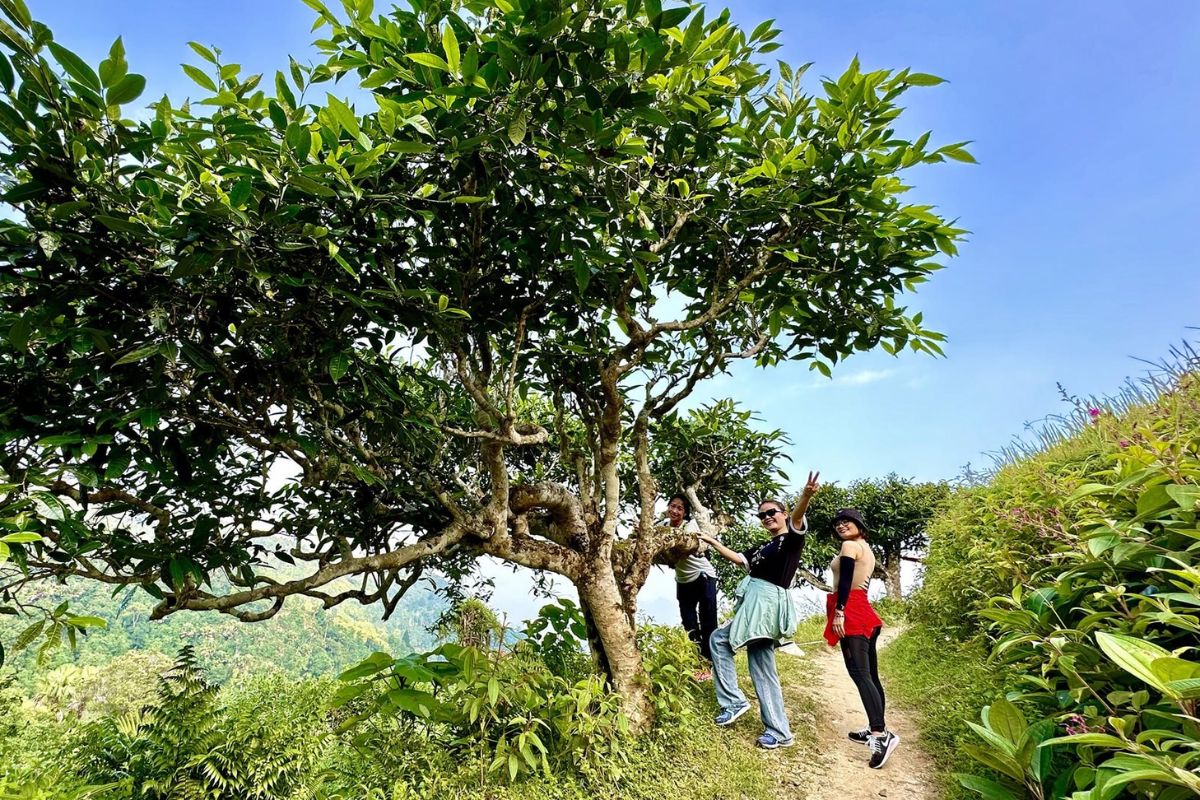
Hiking Up to Xa Phin Village (Source: hanoimoi)
DAY 2: Wake Up in Xa Phin – Local Experience – Return to Ha Giang City
Morning: Gentle Cultural Immersion in Xa Phin
- 06:30 – Rise to the cool mountain air and the gentle susurrations of streams around the stilt houses.
- 07:00 – Savor local breakfast: sticky rice, Shan Tuyet tea, and pumpkin soup, which are served hot by your Dao host.
- 08:00–09:30 – Visit the ancient Shan Tuyet tea trees, witness the moss-covered wooden homes that have stood for centuries, and chat with locals who are drying herbs and slicing bamboo for crafts.
Midday: Return to Ha Giang City
- 10:00 – Pack, say goodbye to your host family.
- 10:30 – Collect at Xa Phin by private car (Optional service back by Impress Travel).
- Noon – Arrive in Ha Giang City. Take a shower at a day-use space, or nap in a nearby café. Time at leisure to relax, repack, or explore the city independently.
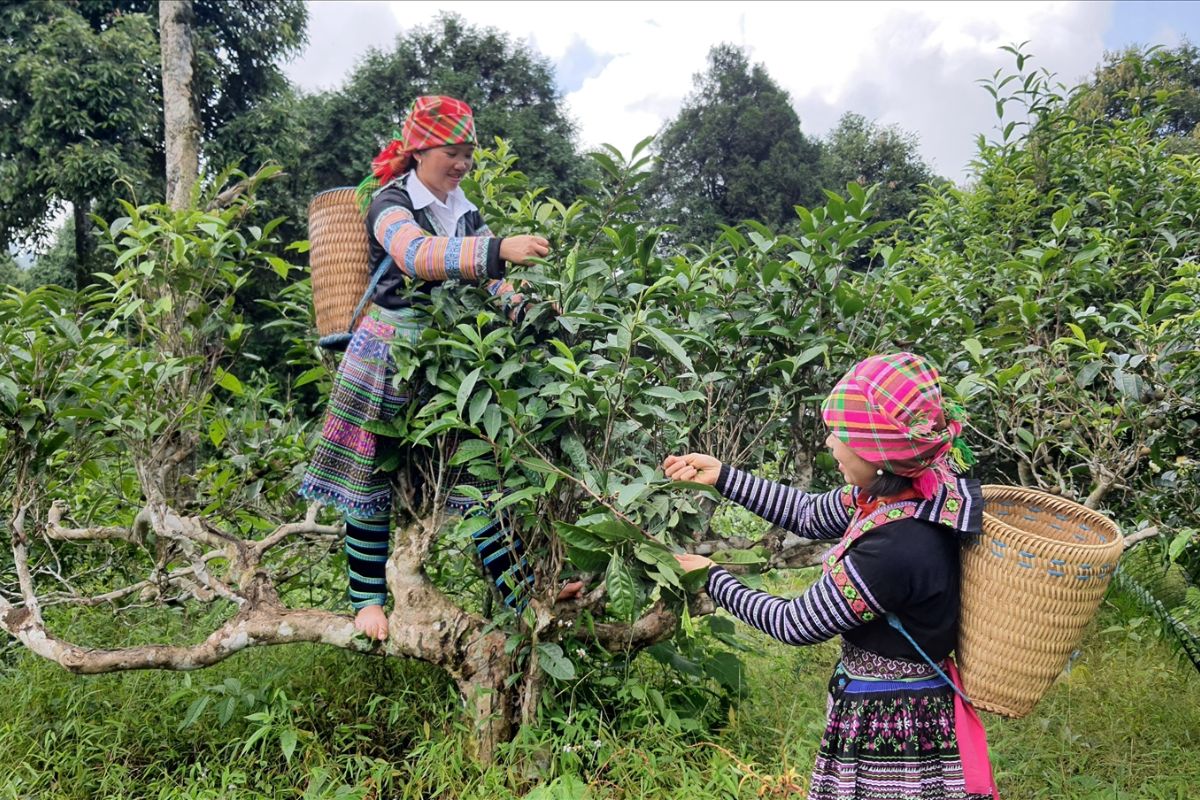
Shan Tuyet Tea Trees (Source: baodantoc)
How to Plan Your Independent Trekking Ha Giang Tour
Pick Your Trail – Terrain, Time & Trekking Style
Begin by determining the type of experience you want. Do you want misty ridgelines and waterfalls? Ancient tea forests? Ethnic cultural encounters?
Some of the popular routes for Independent Trekking Ha Giang include:
|
Route Name
|
Highlights
|
Duration
|
Difficulty
|
|
Mao Phin – Xa Phin – Na Mau
|
Waterfalls, tea forest, Dao homestay
|
2 days
|
Medium
|
|
Lao Xa – Sung La – Phó Cáo
|
Stone houses, H’mong silver craft, cinematic village
|
1–2 days
|
Light
|
|
Sao Ha – Ta Lung – Lung Cu
|
Forest hideaways, haunted legends, border highlands
|
2–3 days
|
Challenging
|
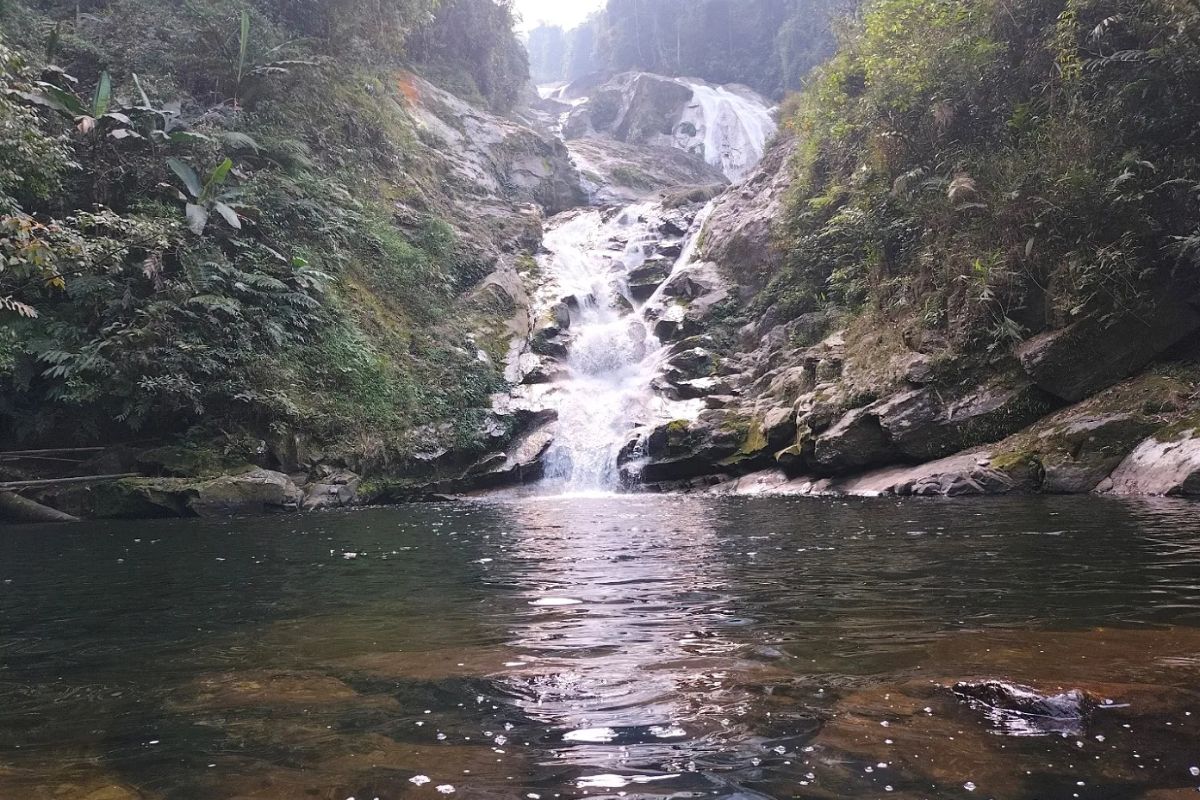
Waterfalls in Xa Phin (Source: hagiangecobungalow)
Use a Ha Giang Trek Map + GPS for Safe & Smooth Hiking
Download a Ha Giang trek map before you go and work out your height gains and losses, water sources, and rest villages. Many of the trails are poorly marked, so it’s essential to have a mix of tools:
- Google Maps Offline: Download maps of your entire route beforehand
- Printed topographic map: Available at some Ha Giang travel offices
Keep your phone charged (carry a power bank) and take screenshots of key landmarks. This is highly helpful in the event of GPS signals failing near the mountains.
Getting to Ha Giang City – The Gateway to the Trails
Most trekkers arrive at Ha Giang City via:
- Sleeper bus from Hanoi (8–9 hours) – Comfortable and cheap
- Private transfer (if you prefer flexibility and stops along the way)
- Train to Tuyen Quang or Vinh Yen + bus to Ha Giang (less direct)
From the city, you’ll either walk straight out to your starting point or use a short car/motorbike transfer to reach villages like Mao Phin or Sung La.
Pro tip: Start your trek early morning (07:00–08:00) to avoid mid-day heat and allow ample time to reach homestay destinations by sunset.

Sleeper Bus from Hanoi to Ha Giang (Source: phuotvivu)
Local Guides
While Independent Trekking Ha Giang means self-guided by default, hiring a local guide for specific legs or remote zones is often wise, especially if:
- You don’t speak Vietnamese
- You’re entering sensitive border areas (e.g., Sao Ha, Lung Cu)
- You want deeper insight into ethnic traditions
Tips for Responsible & Safe Independent Trekking
Travel Light, Walk Kindly with Independent Trekking Ha Giang
Ha Giang’s paths twist through the territory of the Dao, Hmong, Tay, and Lo Lo people, communities that’ve maintained forest, rice terraces, and tradition for centuries. You’re a guest when you hike here.
- Ask before taking a photo, especially of elders and children. A smile and a gesture go a long way.
- Do not offer sweets or money to children. If you are inclined to give, give materials through your homestay host or a local school.
- Do not pick flowers, tea leaves, or corn unless invited to do so by a local.
- Do not leave a trace. Bring your trash, including fruit peels and wrappers, until you have proper disposal.
Follow Local Customs with Humility with Independent Trekking Ha Giang
There are traditions in every village, some of which will be unfamiliar to you, but that’s part of the beauty of hiking off the highway.
- Remove your shoes when entering stilt houses.
- Don’t walk between elders in conversation; it’s disrupting the flow of the conversation.
- Watch where you’re aiming your camera, especially at local ceremonies or funerals.
- Dress modestly despite the heat. Long pants and covered shoulders are respectful.
Stay Safe on the Trail with Independent Trekking Ha Giang
Independent Trekking Ha Giang offers freedom, but also responsibility. While the routes are picturesque, they are remote, and rescues can take time to come. Here is how to stay safe:
- Start hiking early and never hike in the dark. Bring a headlamp — but don’t rely on it to hike late.
- Use a trekking pole, it helps more than you think on rice terrace rims and muddy paths.
- Wear hiking shoes with traction, not sandals or lightweight sneakers.
- Bring mosquito repellent and leech spray (May–August ).
- Notify your homestay of your itinerary and ETA always.
Respect Sacred Nature with Independent Trekking Ha Giang
Trees in Ha Giang aren’t just foliage, they’re guardians. The ancient forests are frequently spiritual guardians, especially the Shan Tuyet tea forests and banyans at village entrances.
- Stay on the trails.
- Do not yell or play loud music in the woods, as it disturbs the land and the wildlife.
- Do not set up camp or light fires without the local host family’s approval.
Conclusion
Independent Trekking Ha Giang offers a raw, rewarding way of experiencing the essence of northern Vietnam, one serene trail, one welcoming village at a time. However you like to do it, solo or combined with a breathtaking Ha Giang loop tour, this is your adventure to shape. Contact Impress Travel today to begin your customized adventure.







